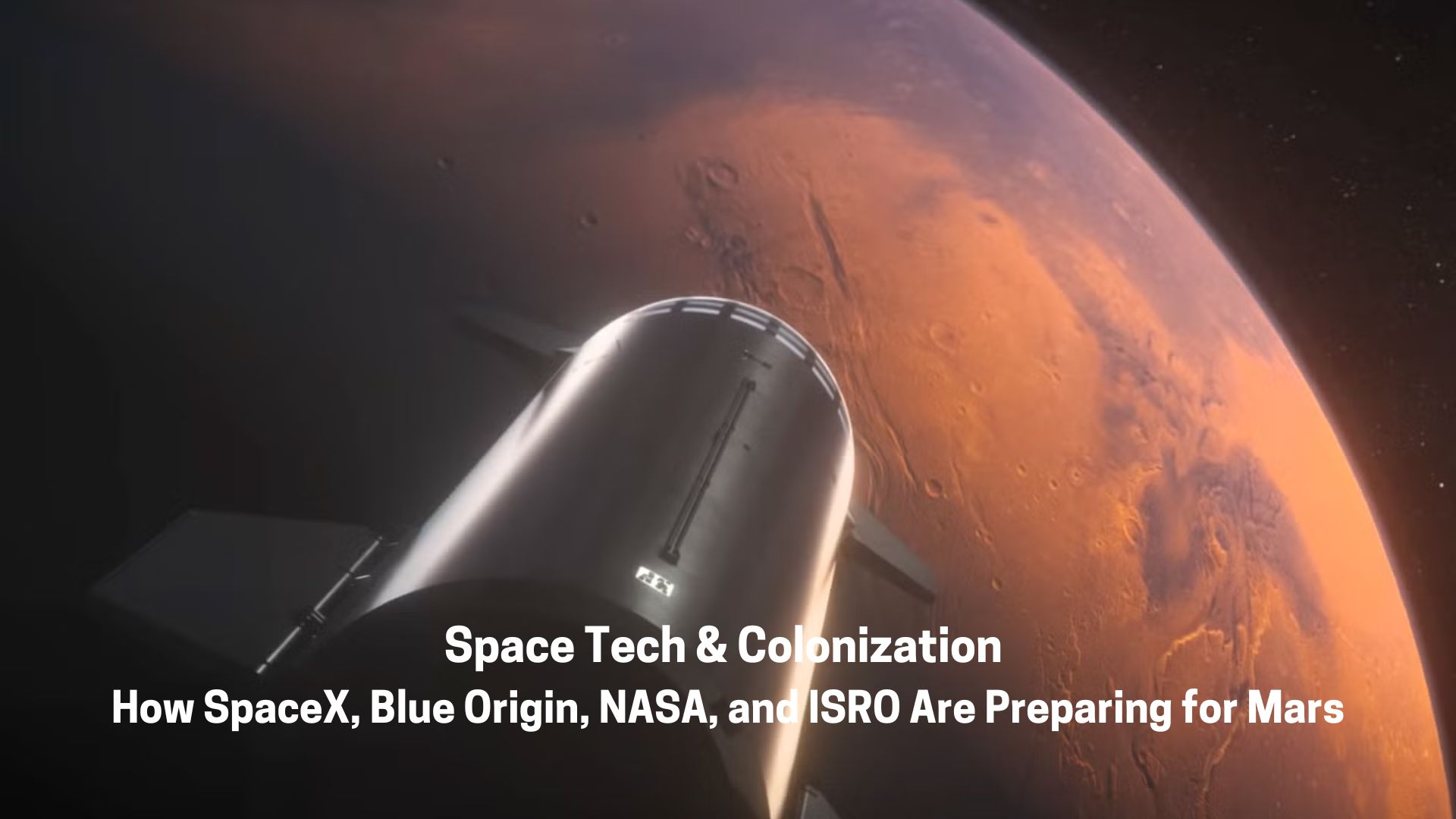The race to Mars is heating up, with SpaceX, Blue Origin, NASA, and ISRO leading the way in developing next-generation space technology. From reusable rockets to AI-powered habitats, space agencies and private companies are making interplanetary colonization a reality. Here’s how they are preparing for the future of Mars exploration.
1. Why Mars?
Mars is the most promising candidate for human colonization due to:
- Similar day length (24.6 hours)
- Polar ice caps (potential water source)
- Thin atmosphere (offers partial protection)
- Evidence of past liquid water (suggests possible habitability)
Despite these advantages, radiation exposure, lack of breathable air, and extreme temperatures remain significant challenges.
2. SpaceX’s Plan for Mars Colonization
2.1 Starship – The Mars Transport System
- SpaceX’s Starship is a fully reusable spacecraft capable of carrying over 100 passengers and cargo to Mars.
- The rocket will be refuelled in orbit before heading to Mars, improving efficiency.
- Elon Musk envisions a self-sustaining colony with regular cargo deliveries and thousands of settlers.
2.2 Terraforming & Self-Sustaining Habitats
- Martian habitats will use local resources (like ice for water and CO₂ for oxygen).
- 3D printing with Martian soil is being explored for constructing radiation-protected shelters.
- SpaceX aims for the first human mission by the 2030s.
3. NASA’s Mars Exploration Strategy
3.1 Artemis & Lunar Gateway
- NASA’s Artemis program will establish a lunar base by 2028, serving as a testbed for Mars missions.
- The Lunar Gateway station will support deep-space travel.
3.2 Mars Sample Return & Rovers
- The Perseverance Rover is currently collecting rock samples to study signs of ancient life.
- NASA plans a crewed Mars mission by the late 2030s or early 2040s.
4. ISRO’s Role in Mars Exploration
4.1 Mangalyaan (Mars Orbiter Mission)
- ISRO (Indian Space Research Organisation) made history in 2014 by becoming the first agency to reach Mars on its first attempt with Mangalyaan (MOM-1).
- MOM-1 successfully studied Martian surface, atmosphere, and weather patterns for 8 years.
4.2 Mangalyaan 2 & Future Mars Missions
- ISRO is planning Mangalyaan 2 (MOM-2), which may carry an advanced Mars lander and rover.
- India is also developing next-generation rockets like Gaganyaan (human spaceflight program) to support future deep-space exploration.
4.3 ISRO’s Collaboration with Global Agencies
- India is strengthening space partnerships with NASA, ESA, and JAXA for joint Mars exploration.
- Technologies developed for India’s Chandrayaan (Moon) missions could support future Martian landers.
5. Blue Origin’s Role in Space Colonization
5.1 Blue Moon & Lunar Infrastructure
- Blue Origin is focusing on the Moon as a stepping stone to Mars with its Blue Moon lander.
- The company envisions off-world manufacturing and resource extraction to sustain space colonies.
5.2 Orbital Habitats & Space Manufacturing
- Founder Jeff Bezos envisions building O’Neill cylinders—massive space stations that could house millions.
- Blue Origin’s New Glenn rocket could support heavy-lift missions to Mars.
6. Challenges of Mars Colonization
6.1 Radiation Exposure
- Mars lacks a strong magnetic field, exposing settlers to harmful cosmic rays.
- Possible solutions: underground habitats, radiation shielding, and AI-monitored health systems.
6.2 Food & Water Production
- Scientists are testing hydroponic and aeroponic farming for growing food on Mars.
- Ice deposits could be used for drinking water and oxygen production.
6.3 Psychological & Social Challenges
- 7+ months of travel and isolation will impact astronaut mental health.
- AI-driven robotic companions and virtual reality environments could help address loneliness.
7. The Future of Space Colonization
- SpaceX plans the first human mission by the 2030s.
- NASA & ISRO are advancing Mars research & technology for future landings.
- Blue Origin is building long-term infrastructure for space habitats.
- AI, robotics, and sustainable energy will play a crucial role in survival.
Final Thoughts: A New Space Age
The dream of Mars colonization is closer than ever, with agencies like ISRO, NASA, SpaceX, and Blue Origin leading the way. Whether it’s Mangalyaan’s contributions, SpaceX’s Starship, or NASA’s Artemis program, space exploration is entering an exciting new era.
Would you live on Mars? Let’s discuss this in the comments!

